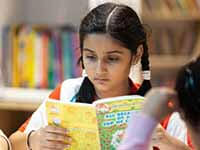In the 21st Century knowing a second language is necessary to have a successful life.
With globalization, the need has increased to communicate with people from diverse cultures and communities.
Employers and businesses are looking for applicants who know multi-language helping them to navigate to the modern global economy.
Learning another language is an important skill set that parents should encourage children to learn from childhood which gives them many beneficial experiences, academic achievement, enhancing student performance, greater cognitive development, positive attitudes towards other languages and cultures making them future-ready for the modern global marketplace.
Why Start At The Age Of 3-4?
As per International school in KL, the first three years of life is a crucial year in a child’s life as it lays foundations for attitudes, thinking, and learning in them.
Using that natural ability it becomes easy for them to adapt to a second language.
When a child is born, they learn by six main methods:-
● Sight
● Taste
● Smell
● Sound
● Touch
● Doing
The information children gain in the first few years of their life stays with them for a lifetime.
Children learn through play which becomes interesting and easy for them while adults learn through facts and information which is boring at times.
So once they reach puberty children’s brain changes which become extremely challenging for an adult to learn a foreign language.
It does not mean adults cannot learn a foreign language but not as easily as children.
It’s never too early or late to start learning a new language.
However, learning languages at an early age promotes healthy development, many cognitive and social benefits.
Let’s understand the Benefits of Learning a Second Language at an Early Age.
1. Give Children A Strong Start
Children who learn another language from Primary education in Malaysia, get a strong start in life as they learn the language with the same interest as their mother tongue.
Children learn without fear of making mistakes, which is necessary to learn new things.
2. Lifetime Association
When children learn a new language at an early age they get enough time to learn in-depth.
They develop an interest in them to know more about culture and create a deeper connection with the language as they mature which stays with them for a lifetime.
3. Feed Their Brains
Research shows that learning a second language helps in promoting brain development which results in the development of problem-solving, creative and critical thinking, listening skills, mental flexibility, improved memory, concentration and multitasking ability.
4. Boost Academic Achievement
Learning a second language at an early age have cognitive benefits which result in a child’s academic achievement through improved reading, writing skills, information processing, thinking, and securing higher grades in an International school in KL.
5. Make Them Cultural Sensitivity, Empathetic
Children who learn second languages develop a connection with things associated with those languages, especially cultures, people, making them more empathetic towards others and help understand things from another point of view.
It gives them a broader perspective of things.
6. Easily Navigate
Children who learn a second language at an early age do not get confused with multiple languages, instead, they easily navigate multilingual environments which opens a world of opportunities for them in future.
Some other benefits of learning a second language from Primary education in Malaysia, at an early age:
● More future career opportunities and higher salaries.
● Developing connections with other cultures and building tolerance.
● Prevention of age-related mental illness.
● They become expert problem solvers.
● They are better at planning, concentrating, and multi-tasking.
● Children have divergent thinking, out of the box thinking.
Research
As per psychologists Ellen Bialystok and Michelle Martin-Rhee’s research and observation in 2004, they conducted one test in order to check the problem-solving abilities of bilingual and monolingual preschoolers.
All children provided a blue circle, blue square bin, red squares and red circle bin.
In order to make them understand they were asked to sort by color, blue shapes in the blue bin and the red shapes in the red bin. Both children performed well.
Then, they were asked to sort by shape, where they needed to place blue circles in the red circle bin and the red squares in the blue circle bin.
This task was difficult and needed more concentration because of contradicting colors. Bilingual children performed this task quicker.
Why Do Children Learn Languages So Fast?
Children are already born with an instinctive knowledge of the language rules.
As per the theory of “universal grammar”, children upon exposure to a specific language, simply fill in the details around those rules which makes them fast and effective learners.
There is also another theory called the “critical period hypothesis” which says that most of us lose access to the mechanism that makes us effective language learners when we reach puberty.
So children learn fast because they have access to learning mechanisms.
There is also debate that learning a second language does not depend on age but on how the language is being taught and learned by children.
How To Help Your Child To Learn Second Languages?
No matter if you are bilingual or not, your support will make a difference in your child’s success in learning languages.
So even if you aren’t fluent, give them an encouraging active learning environment.
You can make use of resources, apps, tools to create an environment at home.
For eg:- Start audio poems in a second language, open kids’ youtube and give them access to channels that teach the second language in the form of videos, interesting cartoons, poems, songs etc.
Children need an environment that is ideal for learning a second language that is rich in terms of input and engagement.
Research shows that children have the ability to become fluent in more than 1 language in childhood so parents need to understand this and make use of it by giving them the right environment at home or enroll them on Primary education in Malaysia that has children from different cultures, communities, an age group where multi-language is taught.
Children learn a second language better if they get the exposure to pick it up from their communities of families, other students.
Conclusion
Children should learn at least 1 language apart from their mother tongue or the English language is spoken at preschool in order to experience the benefits mentioned above which opens the door of opportunities that lie in front of them in future.
By teaching them second languages or giving them the right homely environment or in the form of an International school in KL you will set them up for success.






















